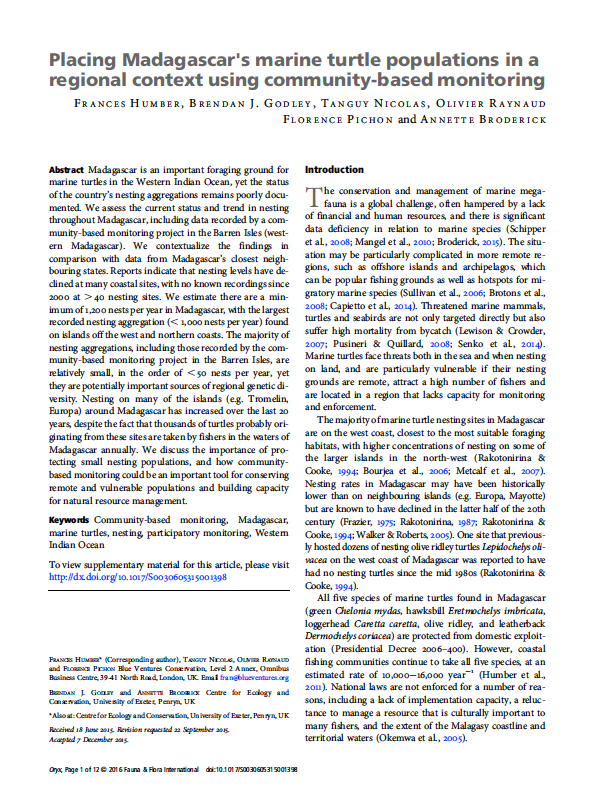Abstract
Madagascar is an important foraging ground for marine turtles in the Western Indian Ocean, yet the status of the country’s nesting aggregations remains poorly documented. We assess the current status and trend in nesting throughout Madagascar, including data recorded by a community-based monitoring project in the Barren Isles (western Madagascar). We contextualize the findings in comparison with data from Madagascar’s closest neighbouring states. Reports indicate that nesting levels have declined at many coastal sites, with no known recordings since 2000 at >40 nesting sites. We estimate there are a minimum of 1,200 nests per year in Madagascar, with the largest recorded nesting aggregation (<1,000 nests per year) found on islands off the west and northern coasts. The majority of nesting aggregations, including those recorded by the community-based monitoring project in the Barren Isles, are relatively small, in the order of <50 nests per year, yet they are potentially important sources of regional genetic diversity. Nesting on many of the islands (e.g. Tromelin, Europa) around Madagascar has increased over the last 20 years, despite the fact that thousands of turtles probably originating from these sites are taken by fishers in the waters of Madagascar annually. We discuss the importance of protecting small nesting populations, and how community-based monitoring could be an important tool for conserving remote and vulnerable populations and building capacity for natural resource management.

















